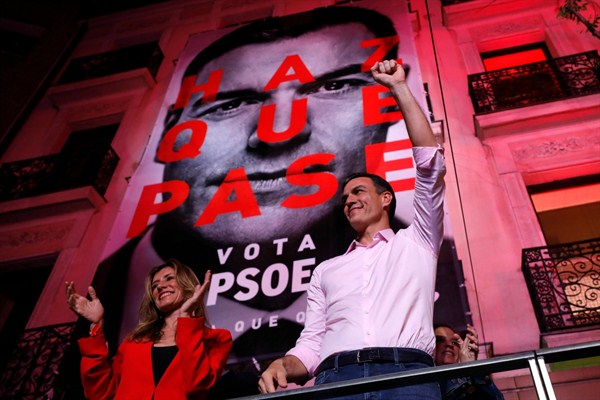MADRID—Spain’s left breathed a collective sigh of relief Sunday night as right-wing parties failed to win enough seats in parliament to put them within striking distance of forming a government that would have included the ultranationalist and far-right Vox party. Instead, voters gave a clear win to the ruling Socialist Party, led by Prime Minister Pedro Sanchez, who is now the only party leader in a position to form a government.
But there’s been no shortage of drama in what was Spain’s third national election in just four years. Since 2015, Spain’s political landscape has fractured, amid a backlash against austerity, a raft of corruption scandals, and the ongoing fallout over Catalonia’s attempt to declare independence. Since its storied transition to democracy in the late 1970s, Spain’s government had the unusual distinction of being a parliamentary system dominated by two parties, the left-of-center Socialist Party and the right-of-center People’s Party. This system was actually built into the constitution to add stability to the then-fledgling democracy.
All that changed when two new, upstart parties burst onto the scene in 2014 and 2015. First, the left-wing Podemos—“We Can”—took five seats in the European Parliament election in May of 2014, riding a wave of popular discontent with anti-austerity and anti-corruption protests. By the general election in December 2015, the centrist Ciudadanos, or Citizens, had gathered enough steam to become a fourth force in politics. Both parties’ emergence brought about a period of political volatility. No single party was able to win a governing majority, nor were any of them able to form a coalition, so voters ended up going back to the polls in June 2016. After four months of negotiations, Mariano Rajoy of the People’s Party was able to form a tenuous government and remain prime minister. But that situation only lasted a year, and Rajoy was replaced by Sanchez after a successful no-confidence vote in parliament triggered by widespread corruption in the People’s Party.

